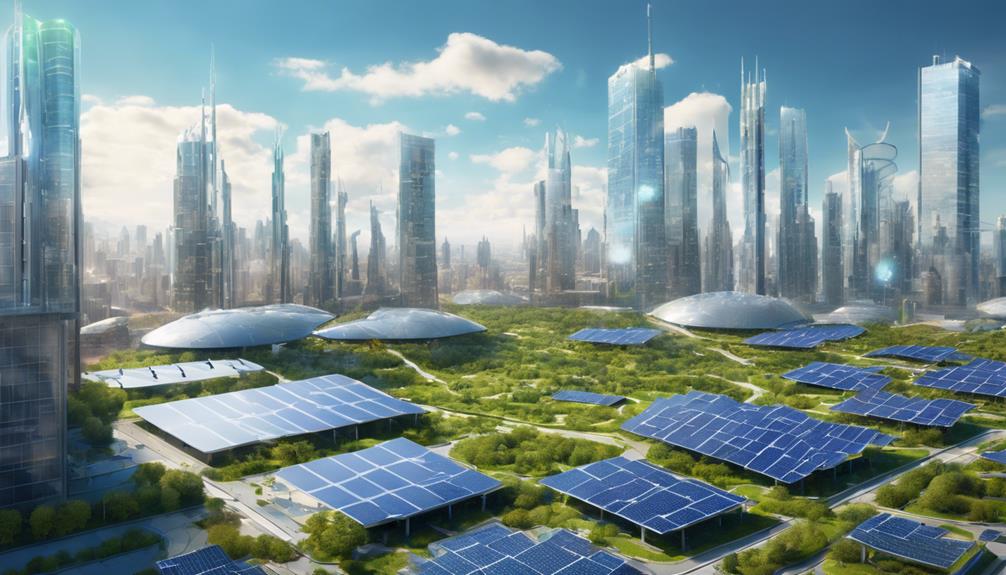
Introduction to White House Solar Panels
In a significant move towards sustainability, the White House has embraced solar energy by installing solar panels. This initiative is part of a broader commitment to renewable energy and reducing the carbon footprint of one of the most recognized buildings in the world. The installation of these solar panels not only serves as a statement of intent regarding environmental responsibility but also highlights the potential for solar energy to play a crucial role in the future of energy consumption in the United States. In this blog post, we will explore the history, benefits, and future of solar panels at the White House, as well as their impact on the nation’s energy landscape.
The History of Solar Panels at the White House
The journey of solar panels at the White House began in the late 1970s during the presidency of Jimmy Carter. In 1979, Carter installed solar water heating panels on the roof of the White House, aiming to demonstrate the viability of solar energy. However, after Carter left office, the panels were removed, and the focus on renewable energy waned for many years. It wasn’t until President Barack Obama took office in 2010 that the White House began re-embracing solar technology. In 2013, the Obama administration installed new solar panels, reigniting the conversation about renewable energy in the United States. This history reflects the fluctuating emphasis on solar energy in American politics and sets the stage for the current administration’s efforts to promote sustainable practices.
The Benefits of Solar Energy
The installation of solar panels at the White House brings numerous benefits, both symbolic and practical. Solar energy is a clean, renewable source of power that reduces reliance on fossil fuels, decreases greenhouse gas emissions, and mitigates climate change. Furthermore, solar panels can significantly reduce electricity bills for both residential and commercial buildings. By harnessing the sun’s energy, the White House can showcase the cost-saving potential of solar technology, encouraging other institutions and homeowners to consider similar investments. Additionally, the installation aligns with national goals of achieving energy independence and security, fostering a more resilient energy grid.
The Economic Impact of the White House Solar Panels
Investing in solar panels at the White House is not only an environmentally friendly choice but also an economic one. The solar industry has been a significant source of job creation in the United States, providing employment opportunities in manufacturing, installation, and maintenance of solar technology. By promoting solar energy at the highest level of government, the White House helps stimulate demand for solar jobs and encourages the growth of the renewable energy sector. Moreover, as the cost of solar technology continues to decline, more businesses and households are likely to invest in solar panels, contributing to economic growth and energy innovation across the nation.
Solar Panels and Energy Independence
Energy independence is a critical aspect of national security and economic stability. By investing in solar panels, the White House sends a clear message that the United States can harness its abundant solar resources to reduce its dependence on foreign energy sources. This shift towards renewable energy sources, such as solar power, is essential for achieving a more self-sufficient energy landscape. As the nation continues to explore diverse energy options, solar energy stands out as a viable solution that can be deployed on a large scale, ensuring a reliable energy supply for future generations.
Challenges Facing Solar Energy Adoption
Despite the numerous benefits of solar energy, several challenges hinder its widespread adoption. One of the primary challenges is the initial cost of installation, which can be a barrier for many homeowners and businesses. Although prices for solar panels have decreased significantly over the years, the upfront investment can still be daunting. Additionally, some regions face regulatory hurdles and inconsistent policies regarding solar energy, which can complicate the adoption process. The White House’s commitment to solar panels serves to address these challenges by demonstrating the feasibility and importance of renewable energy, advocating for supportive policies, and encouraging public and private partnerships.
The Future of Solar Energy in the United States
The future of solar energy in the United States looks promising, especially with the White House leading the charge. As technology continues to advance, solar panels are becoming more efficient and cost-effective. Innovations in energy storage, such as batteries, are also enhancing the viability of solar energy by allowing users to store excess power generated during the day for use at night. Furthermore, the increasing awareness of climate change and the urgency of transitioning to renewable energy sources are pushing policymakers to prioritize solar energy initiatives. The White House’s solar panels symbolize a commitment to these goals and inspire a national movement towards a greener, more sustainable future.
Conclusion: The Significance of White House Solar Panels
In conclusion, the installation of solar panels at the White House marks a pivotal moment in the United States’ journey towards sustainable energy. It reflects a commitment to renewable energy, energy independence, and economic growth while addressing the pressing challenges of climate change. As more institutions and individuals recognize the benefits of solar energy, the impact of the White House solar panels will extend far beyond the iconic building. By championing solar energy, the White House not only sets an example for the nation but also contributes to the global movement towards a cleaner, more sustainable environment. The future of solar energy is bright, and the White House is leading the way.





